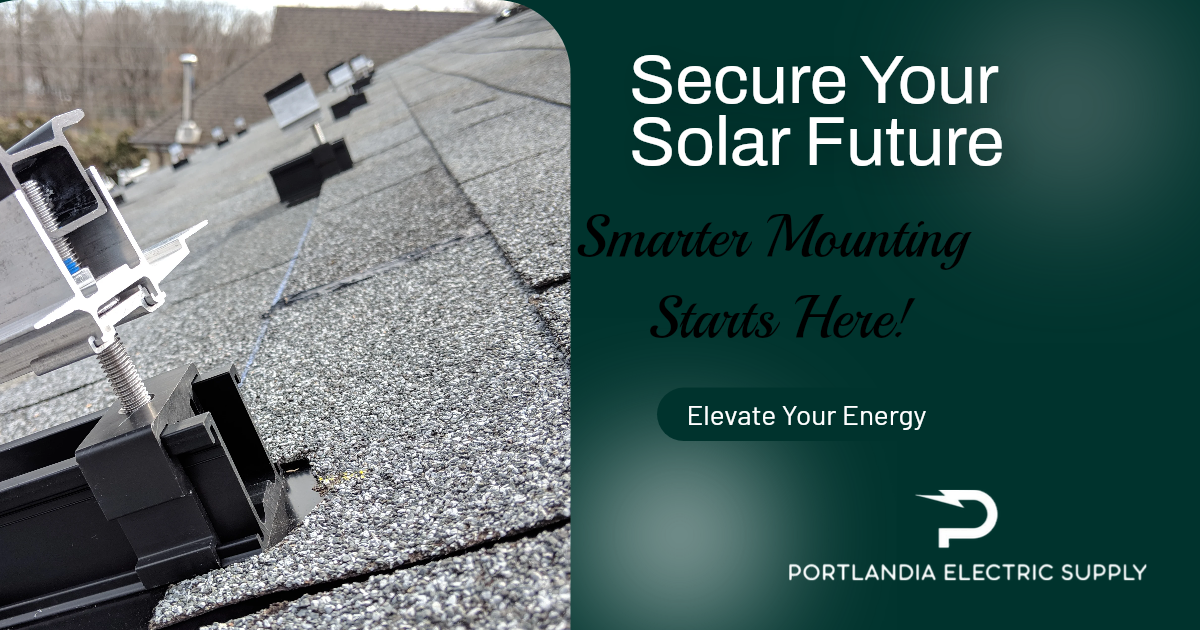Rail-Based or Rail-Less? Deciding the Optimal Mounting System for Solar Installations with EcoFasten

As the global transition toward renewable energy accelerates, selecting the right mounting system for solar installations has become a vital step in achieving long-term efficiency and sustainability. Whether you’re planning a rooftop array for your home or a large-scale commercial solar project, the choice between rail-based and rail-less systems can greatly influence the outcome. EcoFasten, a leading name in solar hardware, provides reliable, high-performance mounting options that cater to various installation requirements. This guide examines the technical nuances of each mounting system for solar installations, helping you make an informed decision based on structural needs, budget, and site conditions.
Understanding the Mounting System for Solar Installations
Introduction to Solar Mounting Systems
The mounting system for solar installations is the foundation that supports photovoltaic (PV) panels and secures them in place. These systems are engineered to withstand environmental stresses while maintaining optimal orientation for solar energy capture. Broadly, the industry uses two types of mounting systems: rail-based and rail-less.
-
Rail-based systems consist of metal rails that attach to the roof and support multiple panels.
-
Rail-less systems, by contrast, attach panels directly to the roof, eliminating the need for rails.
Choosing the right mounting system for solar installations ensures long-term reliability, aesthetic appeal, and cost-efficiency.
Why System Choice Matters
The mounting system for solar installations directly impacts installation speed, panel performance, roof load distribution, and overall project cost. Factors such as roof type, local climate, and the scale of installation play critical roles in system selection.
A well-matched mounting system maximizes sunlight exposure while minimizing installation complications and long-term maintenance. According to industry experts, an optimized system can significantly reduce installation time and material use—contributing to faster project completion and better return on investment.
Rail-Based Mounting Systems
Benefits
Rail-based solutions have been widely adopted due to their structural durability and layout flexibility. This type of mounting system for solar installations is especially suitable for challenging roof surfaces and environments with high wind or snow loads.
Advantages include:
-
Even weight distribution: Reduces stress on individual roof points.
-
Customizable panel alignment: Ideal for irregular or complex rooftops.
-
Enhanced wire management: Rails offer a natural path for routing cables.
Solar professionals often prefer this system for its proven reliability and performance in diverse conditions.
Challenges
Despite their strengths, rail-based systems add weight to the structure and involve more components, which can increase material and labor costs.
-
Higher installation time: More components mean longer setup.
-
Visual bulk: Some homeowners may not prefer the appearance of rails.
-
Structural limitations: Older roofs may need reinforcement to support the system’s weight.
These factors must be considered when choosing the best mounting system for solar installations.
Rail-Less Mounting Systems
Advantages
Modern rail-less systems are gaining traction for their sleek design, reduced material requirements, and faster installation processes. These benefits make them an appealing mounting system for solar installations, especially in residential contexts.
Key benefits:
-
Lightweight design: Ideal for roofs with load constraints.
-
Faster installation: Fewer parts mean reduced labor and time.
-
Enhanced aesthetics: Low-profile finish is visually appealing.
EcoFasten’s SimpleGrip and SimpleBlock-PV are prime examples of efficient, flexible rail-less systems that offer ease of installation and robust performance.
Potential Drawbacks
While attractive for many applications, rail-less systems require precise planning and installer experience.
-
Steeper learning curve: Not all installers are familiar with these systems.
-
Wire management complexity: Without rails, cable routing may require creative solutions.
-
Panel compatibility limitations: Some models only support specific panel types.
Understanding these limitations is crucial when evaluating a mounting system for solar installations.
EcoFasten’s Mounting Solutions
EcoFasten provides premium rail-based and rail-less options, engineered for various solar scenarios.
Rail-Based Systems
EcoFasten’s Rock-It System is a popular mounting system for solar installations that offers adjustable tilt and quick installation. The ClickFit EVO, another standout product, supports metal roofs with a simple click-in mechanism, significantly reducing labor time.
Features include:
-
Adjustable tilt and height
-
Advanced waterproofing seals
-
Compatibility with diverse roof types
Rail-Less Systems
EcoFasten’s rail-less solutions such as SimpleGrip are tailored for modern solar installations demanding low weight and reduced visual impact. These systems minimize material use without compromising stability or performance.
Key benefits:
-
Minimal components for faster setup
-
Flexible panel positioning
-
Integrated waterproofing and sealing
By offering both types of mounting systems for solar installations, EcoFasten ensures users have the tools to customize installations to their site-specific needs.
Choosing the Right System for Your Installation
Residential Applications
For homeowners, the choice of a mounting system for solar installations affects everything from curb appeal to installation time.
-
Shingle roofs: Both systems are viable; rail-less offers a cleaner look.
-
Tile roofs: Rail-based systems provide better support and adaptability.
-
Budget-sensitive projects: Consider labor savings with rail-less designs.
Local weather conditions, building codes, and long-term roof maintenance should also influence the decision.
Commercial and Industrial Installations
Larger systems must consider logistical and regulatory factors.
-
Flat roofs: Rail-less systems often allow more efficient use of space.
-
Tilted arrays: Rail-based systems are still preferred for optimizing angle.
-
Durability needs: Rail-based options offer a track record of performance under extreme conditions.
For industrial environments, long-term resilience and regulatory compliance are paramount when selecting a mounting system for solar installations.
Final Thoughts
The best mounting system for solar installations depends on careful analysis of site conditions, project goals, and budget. EcoFasten’s comprehensive range of rail-based and rail-less systems ensures you can meet any challenge, whether you’re a homeowner, installer, or solar project developer. Always consult with experienced professionals to ensure your chosen mounting solution supports both your structural and energy efficiency objectives.
Would you like a visual comparison chart between rail-based and rail-less systems for quick reference?






